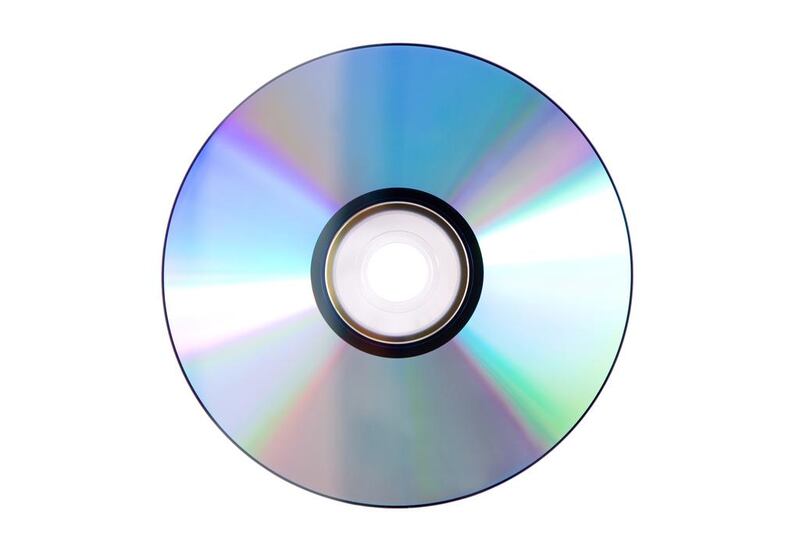Four months after being shut down by local authorities, this week sees the resurrection of London superclub Fabric. The revocation of the dance institution’s licence on August 12 was ostensibly triggered by a police investigation into drug-taking on the premises but the ensuing debate took in social issues, such as property development and gentrification, at a time when Britain’s club scene has generally never felt more threatened.
In the event, it was Fabric’s status that saved it. As a brand, it had the clout to become a cause célèbre, inspiring a grass-roots campaign that was instrumental in causing the authorities to pause, before shuttering it permanently. There was a certain irony, even as the club’s fate hung in the balance, that a key component of the campaign was its 15-year-old mix CD series.
Fabric 90 was released in October and mixed by London's own Scuba, founder of the Hotflush Recordings label and the last DJ to play the club, on the night of August 6, before its temporary closure. All CD proceeds went to the #savefabric social media campaign.
Indeed, had negotiations failed, it is entirely possible that the Fabric brand would have lived on solely through its CD series – a format that has seemed oddly archaic for some years now in dance music. Throughout the 1990s and 2000s, the official mix CD was crucial to any dance scene. They were lovingly crafted showcases of a DJ’s individual aesthetic, a specific subgenre or both, made for dance fans who might not have geographical access to the clubs themselves; they captured moments in dance history that might otherwise have been lost to the inherently transient, permanently-mutating shifts in club music.
Throughout the 2000s, Fabric mixes – along with rival series such as DJ-Kicks – were eagerly-anticipated events for dance fans, in many ways more so than official artist albums. Club scenes may be notoriously fickle, but the best of the series – Michael Mayer's Fabric 13 (2003), Carl Craig's Fabric 25 (2005), Ewan Pearson's Fabric 35 (2007) – stand as crucial aesthetic documents representing a label, a city or simply a DJ's own unique vision.
But over the past few years it's been hard to escape the feeling that they've become rather redundant. Free online mixes proliferate on platforms such as SoundCloud and Mixcloud, both crafted by DJs at home or recorded during live sets. Online publications with an electronic bent, such as Resident Advisor and FACT, have developed regular series of their own. Dissemination to casual consumers has never been easier, but the pressure has also mounted on artists to turn out a product as high quality as any commercial mix.
Regardless of their gratis nature, these mixes are no longer seen as casually thrown-together freebies. The finest examples take on long-term canonical status as much as any official release: Nguzunguzu's 2011 Perfect Lullaby mix for DIS Magazine, for instance, was a spectacular introduction to the LA duo of Asma Maroof and Daniel Pineda's penchant for blending R&B with Caribbean influenced zouk, African infused kizomba and their own dreamy beats. It remains the high point of their discography. Amsterdam producer Young Marco's 2012 Juno Plus podcast was a similarly brilliant debut from a new talent.
It's no surprise, then, that the frisson around a new Fabric release isn't what it was: once a rare opportunity for a DJ to commit their sound to disc, it's now a commonplace promotional tool. And from a listener's perspective, why anticipate your favourite DJ's official Fabric mix when they upload live sets and mixes to their SoundCloud on a frequent basis anyway? Fabric mixes are rarely outright bad, but despite a variety of approaches in order to justify them as commercial propositions in recent years, the bulk no longer feel special. Often, DJs will aim for something rather more intricate and technique-heavy than they would be able to pull off in a live set. Rotterdam's Joris Voorn crammed 65 tracks into his Fabric 83 in 2015; Scuba's Fabric 90 wove 42 selections together. In both cases, the level of detail was admirable – but it came somewhat at the expense of raw energy. At the other end of the scale, Birmingham tech house figurehead Hannah Wants chose not to deviate from her usual full-on, up-to-date approach when compiling September's FabricLive 89; the result was as functional and enjoyable a mix as any of Wants's own bimonthly free SoundCloud mixtapes, but nothing about it made it any more distinct from them or worth paying for.
And while listeners may be as happy to grab their electronic fix for free from sundry online platforms, the reverence some DJs still have for the Fabric brand can actually backfire. Glasgow's Jackmaster was chosen to mix FabricLive 57 in May 2011, at a time when his all-encompassing party-starting music made him one of the most exciting DJs in the world. But in an attempt to sum up his entire spectrum of tastes in a CD-length mix, the result felt overstuffed and hurried – unlike the easy-going fun of his own two-hour end-of-year mixes.
But every so often, a Fabric mix still comes along that justifies the whole enterprise, and the latest, Nina Kraviz's Fabric 91, is a spectacular case in point. Kraviz, a former dentist from Moscow who was born in Siberia, is not a new name: she has been releasing singles since 2009, and her eponymous debut album – full of moody deep house and sultry vocals – landed in 2012. But since starting her own label Trip in 2014, Kraviz has quietly been transforming her entire aesthetic, and the timing of Fabric 91 to capture her new style at its most bolshy and confident has been impeccable.
Kraviz has started to explore some of electronic music’s wilder shores both as she reaches back to 1990s rave with veterans such as Aphex Twin and nurtures protégés such as Iceland’s Bjarki, the label’s prolific breakout star who released two albums of twisted techno in 2016.
As Trip has flourished, her own DJ sets have increasingly been centred around its experimental output and uncompromising aesthetic. A few weeks before Fabric 91 was released, she took to Facebook to pen a lengthy defence of a show in Melbourne she felt had been unfairly criticised: "They wanted three hours of long, steady beat narrative and I offered something that didn't match their expectations," as she put it.
Fabric 91 is certainly not a steady beat narrative. It's a 41-track mix packed full of unreleased material that doesn't so much twist and turn as teleport from cavernous techno to electrifying acid riffs at the drop of a hat. Its cold, percussive sonic palette could be described as austere, were it not governed by Kraviz's whimsical decisions: the middle section where she rattles through a sequence of 30-second beat workouts and sampled speech excavated from 1990s rave and drum 'n' bass; the moment when Frak's First Snow in Harlem veers off-piste in what might ordinarily be considered a technical mess-up but in this context feels entirely appropriate.
Throughout, more straightforward tracks are disrupted by sinister peals, squelches and alien noises, such as the siren going off behind the warm synths of Bedouin Ascent's Ruthless Compassion. If the mix has a conventional peak at all, it comes with young Russian duo PTU's A Broken Clock Is Right Twice a Day, which wobbles and clanks on its axis around old-school rave synths, snatches of sampled speech-like found radio transmissions, and percussion that sounds like a malfunctioning clock. Fabric 91 ends with an Aphex Twin cut salvaged from his 200-track SoundCloud dump of last year; its whoops and buzzes sound more like a restarting than a winding down.
Just two of Fabric 91's 41 tracks are Kraviz's own – though the bleeping, incantatory Pochuvstvui is a definite highlight – but her approach fits in with a larger pattern of auteurist, experimental contributions to the series becoming its most valued. Fabric 91 may be a strange, difficult creature whose joys don't come in the conventional functionality of the build and release or the serious, technically masterful project – the "beat narrative" Kraviz referred to on Facebook – but it is very much, and very evidently, a singular artistic vision.
In recent years, this has been the common thread linking the most successful Fabric mixes: Omar-S's sleek Fabric 45 (2009) and Levon Vincent's raw Fabric 63 (2012) both functioned as artist albums as well as conventional mixes. The auteurist approach can be suspect in dance music, a form where functionality is to be prized rather than looked down on: the faceless producer who makes a peak-time banger is worth much more than countless revered legends who, in their old age, abandon a dancefloor they no longer enjoy to do self-serious conceptual work with orchestras. But for those talented enough to pull it off, the commercial mix CD, far from being a relic, may be the best format in which to express it.
Alex Macpherson is a freelance journalist who also writes for The Guardian and New Statesman.





